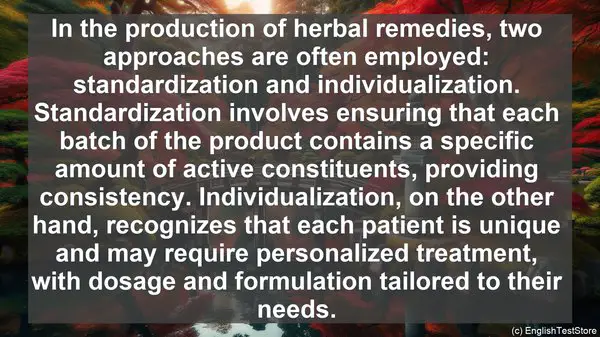Introduction
Welcome to today’s lesson on herbal pharmacology. In this lesson, we’ll be discussing 10 words that are often misunderstood or used interchangeably. By the end of this lesson, you’ll have a clear understanding of these terms, which will greatly benefit your studies in this field.
1. Herbal vs. Botanical
One of the most common confusions is between the words ‘herbal’ and ‘botanical.’ While both relate to plants, ‘herbal’ specifically refers to the medicinal use of plants, whereas ‘botanical’ is a broader term encompassing all aspects of plants, including their taxonomy and morphology.

2. Infusion vs. Decoction
When it comes to preparing herbal remedies, ‘infusion’ and ‘decoction’ are often used interchangeably. However, there’s a distinct difference. An infusion is made by steeping the plant material in hot water, while a decoction involves boiling the material. The choice between the two methods depends on the plant’s properties and the desired outcome.
3. Tincture vs. Extract
Both tinctures and extracts are concentrated forms of herbal remedies. However, the difference lies in the solvent used. Tinctures are made by soaking the plant material in alcohol, whereas extracts can use various solvents, including water, alcohol, or oil. This distinction affects the final product’s potency and shelf life.
4. Syrup vs. Elixir
While both syrups and elixirs are liquid preparations, they differ in their composition. Syrups are sweetened solutions, often with sugar or honey, and are primarily used to mask the taste of bitter herbs. Elixirs, on the other hand, contain alcohol and are known for their long shelf life and preservation properties.
5. Active Constituent vs. Marker Compound
When analyzing the chemical composition of a plant, researchers often look for active constituents and marker compounds. Active constituents are the components responsible for the plant’s therapeutic effects, while marker compounds are used to identify and standardize the plant material. Both are crucial in quality control and dosage determination.
6. Adverse Effect vs. Side Effect
In pharmacology, adverse effects and side effects are often mentioned. While they both refer to unwanted reactions, there’s a subtle difference. Adverse effects are more severe and can be potentially harmful, while side effects are usually milder and more common. Understanding these terms helps in assessing the safety profile of herbal remedies.
7. Contraindication vs. Precaution
Before using any herbal remedy, it’s essential to know about contraindications and precautions. A contraindication is a situation where the use of a particular herb is absolutely not recommended, as it can be harmful. Precautions, on the other hand, indicate that while the herb can be used, certain conditions or factors need to be considered to ensure safety.
8. Standardization vs. Individualization
In the production of herbal remedies, two approaches are often employed: standardization and individualization. Standardization involves ensuring that each batch of the product contains a specific amount of active constituents, providing consistency. Individualization, on the other hand, recognizes that each patient is unique and may require personalized treatment, with dosage and formulation tailored to their needs.

9. Efficacy vs. Safety
When evaluating the benefits of an herbal remedy, two aspects are crucial: efficacy and safety. Efficacy refers to the product’s ability to produce the desired therapeutic effect, while safety relates to its potential for harm. Striking a balance between the two is essential in ensuring optimal patient outcomes.
10. Traditional Use vs. Evidence-Based Medicine
Finally, it’s important to understand the difference between traditional use and evidence-based medicine. Traditional use refers to the historical and cultural practices of using herbs for various ailments. Evidence-based medicine, on the other hand, relies on scientific research and clinical trials to validate the efficacy and safety of herbal remedies. Both approaches have their merits and can complement each other in modern healthcare.
